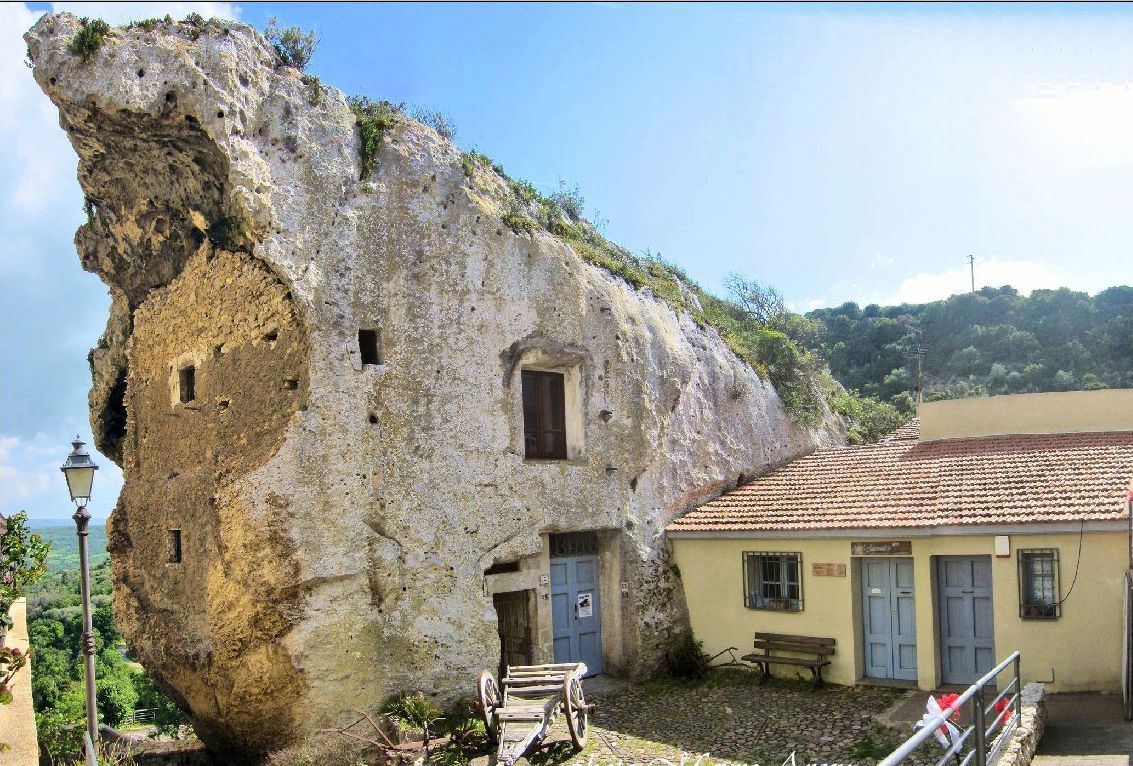The Domus De Janas “La Rocca” In Sedini 0 Comments

In the north-west of Sardinia, in Anglona, among the hills overlooking the Gulf of Asinara, the small village of Sedini, 95 km and 1 hour and a half by car from the Gabbiano Azzurro Hotel & Suites, is the guardian of an extraordinary archaeological treasure, the House in the Rock. An intriguing enormous boulder entirely on surface, as large as a three-storey building, named as "the cathedral of the Domus de Janas", shaped by nature and excavated by man in the Neolithic period to be probably used as a burial, from the 4th or 3rd millennium BC.
The Domus de Janas is built inside a huge limestone boulder overlooking a precipice. The rock represents the roofing and a large part of the wall construction; only one vertical wall is made up of tuff blocks. There are rectangular windows of various sizes at different heights. Three mini apartments have been created on two floors and unfortunately the changes made have altered its initial peculiarity. However, the underground areas remain intact, consisting of natural caves, with flooring, wall structures and roofing still in rock.
Its peculiarity is that it is located in the town’s main street, inside the historic centre and not, as it generally happens with the Domus De Janas, in remote and wild places. Over the centuries, the Domus de Janas of Sedini, also known as "La Rocca", was used for the most various purposes: to produce bricks, as a prison in the Middle Ages, as a shelter for animals, a shop and even as a private home. The mediaeval structure, with the hearth dug in the rock floor in the centre of the room and the spiral staircases also dug into the very rock, is preserved intact.
At the entrance, the tunnel on the left leads to the ancient rooms thanks to a small wooden staircase. In the larger rooms panels on the history of the area and its monuments are displayed, and on the ground floor are tree spices, minerals, fossils.
On the upper floor the reconstruction of the typical Anglona house with furniture and furnishings with the fireplace dug into the rock and the sleeping area. There is the antique wrought iron bed and all the different objects that were part of everyday life in the past, and also an interesting weaving loom.
“La Rocca” hosts many caves dug into the limestone rock. The funerary chambers, which are accessed through narrow passages, have walls decorated with engravings, frescoes and reliefs depicting religious symbols, animals and human figures. Through the works and funerary documentation, we discover prehistoric Sardinian art and the spiritual beliefs of the Nuragic era, which left so much of its mark on Sardinia.
“La Rocca” offers fascinating pages on ancient traditions and the culture of its inhabitants. This is not the usual archaeological site, but it is a real journey throughout time, which calls us to reflect on our history, on our heritage coming to us from ancient civilizations.
If the Janas, ancient landladies, were annoyed by the many changes over the centuries in their Domus, which were not always welcome, today the Sedini fairies should have found some peace since their wonderful home was transformed into a permanent museum of the ethnographic traditions of Sedini and Anglona.
A brilliant initiative, which finally bears witness to those generations of Sardinians who, tirelessly, dug and searched with their bare hands in the depths of the stone for a way and a place to live.
“A rock pile ceases to be a rock pile the moment a single man contemplates it, bearing within him the image of a cathedral.” (Antoine de Saint-Exupéry)
--Written by Daniela Toti
Share your opinion with us!